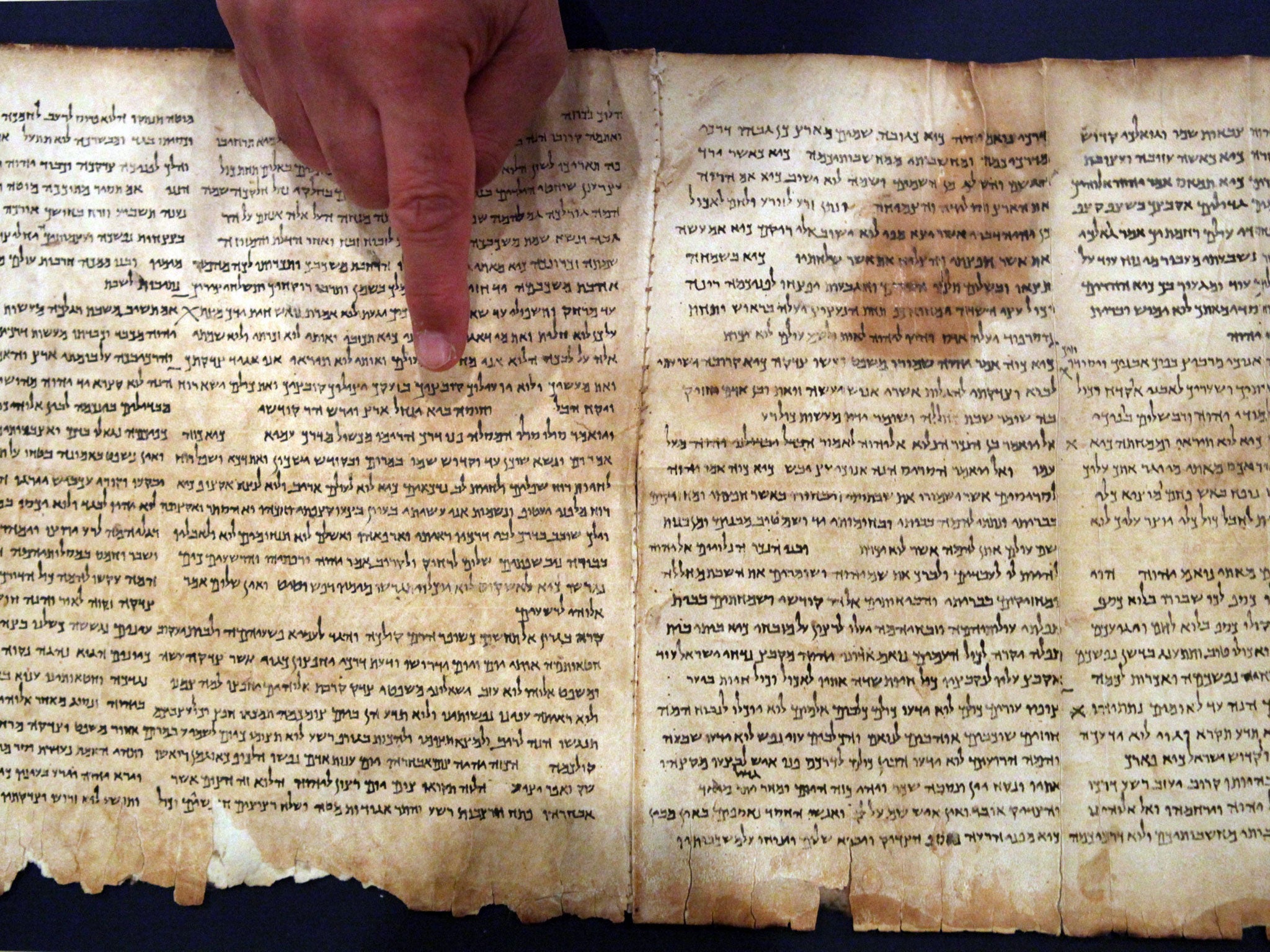Dead Sea Scroll discovery prompts mystery over text's origins
Study finds chemicals that pose ‘intriguing questions on the provenance of the Temple Scroll’

Your support helps us to tell the story
From reproductive rights to climate change to Big Tech, The Independent is on the ground when the story is developing. Whether it's investigating the financials of Elon Musk's pro-Trump PAC or producing our latest documentary, 'The A Word', which shines a light on the American women fighting for reproductive rights, we know how important it is to parse out the facts from the messaging.
At such a critical moment in US history, we need reporters on the ground. Your donation allows us to keep sending journalists to speak to both sides of the story.
The Independent is trusted by Americans across the entire political spectrum. And unlike many other quality news outlets, we choose not to lock Americans out of our reporting and analysis with paywalls. We believe quality journalism should be available to everyone, paid for by those who can afford it.
Your support makes all the difference.One of the best preserved texts in the Dead Sea scrolls has prompted further mystery after a study into the document found chemicals from outside the region had been used to preserve it.
The first of the Dead Sea scrolls, a collection of ancient Jewish texts predominantly written in Hebrew, were found in 1947 by Bedouin shepherds looking for a lost sheep.
The discovery prompted years of archaeological work in 11 caves surrounding the salt lake, and unearthed some of the most well-preserved ancient texts ever found.
The Temple scroll is the among the largest and best preserved of the 900 texts discovered in jars around the region, unfurling to a length of more than eight metres. It describes an unbuilt Jewish temple as well as regulations on sacrifices and temple practices.
However, a study carried by researchers at the Massachusetts Institute of Technology (MIT) has revealed that the text is preserved by minerals that cannot be found in the surrounding area – leading to questions over where and how the ancient text was produced.
Published in the journal Science Advances, the study found a continuous layer of glauberite and thenardite – sulphate minerals that “are not commonly found in the Dead Sea region” – had been spread across the text.
It added that the discovery posed “intriguing questions on the provenance of the Temple scroll”.
Dr Ira Rabin of the Federal Institute of Materials Research and Testing and Hamburg University, who was involved in the study, told MIT’s news department: “This study has far-reaching implications beyond the Dead Sea scrolls.
“For example, it shows that at the dawn of parchment making in the Middle East, several techniques were in use, which is in stark contrast to the single technique used in the middle ages.”
Parchments discovered in the caves were divided into three types of treatments – leather parchments, brown parchments that were tanned in a style typical of eastern cultures, and untanned, ivory white parchments typical of western practices.
The Temple scroll, a sheet of material so thin experts have suggested it may be based on an animal skin that has been split in two, is among the untanned texts – however it is the only one found to have potentially been preserved using the sulphites from outside the Dead Sea region.
It is now hoped the discovery will ensure the text can be better preserved in the future – with the salt base uncovered making even the slightest change in humidity potentially destructive.
Dr Rabin added: “There could be an unanticipated sensitivity to even small-scale changes in humidity.
“The point is that we now have evidence for the presence of salts that might accelerate their degradation … These are aspects of preservation that must be taken into account.”
Join our commenting forum
Join thought-provoking conversations, follow other Independent readers and see their replies
Comments